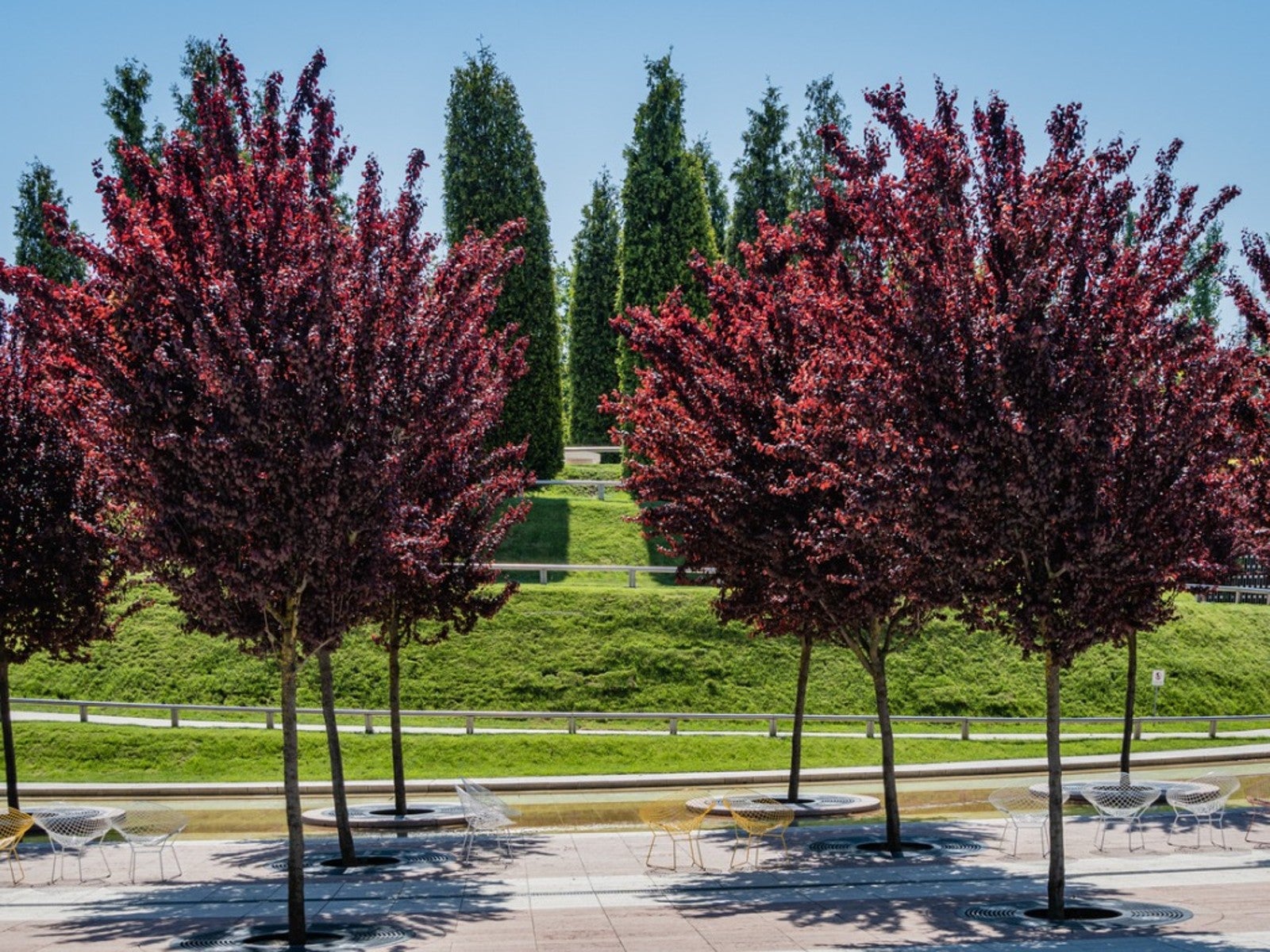Types Of Trees With Purple Leaves


If you've grown ornamental trees in the past with a view to their flowers, you aren’t alone. The blossoms provide a short but beautiful show. However, many gardeners these days are opting for rich foliage in unusual shades rather than pretty flowers. Purple leaf trees, for example, add a pow to a landscape all season long. If you are considering planting a tree with purple foliage, read on for a few of our favorites.
Why Plant Purple Trees?
Trees with bright foliage in colors other than green add interest and complexity to a landscape. Purple foliage trees are popular and provide a lovely contrast to smaller trees or shrubs with lighter or variegated leaves.
The interest in different types of purple trees has helped to increase the choices available in commerce. Today you will be able to select small, medium, or tall trees in a wide range of shades of purple, from lavender to almost black.
A Small Tree with Purple Leaves
When it comes to small, purple leafed trees, one species stands out. That is the Japanese maple (Acer palmatum), a showy little maple tree species with lacy, deeply lobed leaves. With hundreds of cultivars on the market, more than a few offer purple leaves all season long, like 'Bloodgood.' It grows slowly to between 15 and 25 feet (5-8 m.) tall. For a smaller purple Japanese maple, 'Crimson Queen' tops out at about 8 feet (2 m.).
Another excellent choice is the 'Forest Pansy' cultivar of redbud (Cercis canadensis 'Forest Pansy'). The pink spring blossoms appear on bare branches. When the leaves emerge, they are a lovely shade of royal purple. The foliage hue shifts to dark, green-purple by fall.
The 'Royal Purple' smoke tree (Cotinus coggygria 'Royal Purple') also offers bright purple leaves, and it has the additional attraction of unusual, feathery flower clusters, also in shades of purple. It grows to 15 feet (5 m.) tall.
Larger Purple-Leaf Trees
'Crimson King' Norway maple (Acer platanoides 'Crimson King') is a popular and well-known tree with purple-crimson leaves that retain this rich color through the summer. This purple tree can grow to 40 feet (12 m.) tall and shrugs off poor soil and city pollution.
Sign up for the Gardening Know How newsletter today and receive a free copy of our e-book "How to Grow Delicious Tomatoes".
A second good option is a purple leafed European beech tree (Fagus sylvatica cultivars). These are slow-growing beeches and make excellent specimen trees.

Teo Spengler is a master gardener and a docent at the San Francisco Botanical Garden, where she hosts public tours. She has studied horticulture and written about nature, trees, plants, and gardening for more than two decades, following a career as an attorney and legal writer. Her extended family includes some 30 houseplants and hundreds of outdoor plants, including 250 trees, which are her main passion. Spengler currently splits her life between San Francisco and the French Basque Country, though she was raised in Alaska, giving her experience of gardening in a range of climates.